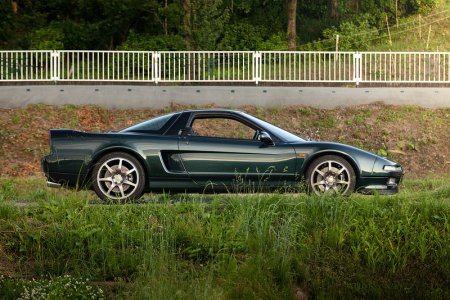Hi All,
I'm fairly new to NSX ownership (month two now) but have already spent a bit of time with my head in the forums and workshop manuals thanks to a few common problems (failing window regulators, hot A/C) that my relatively low-km 1992 NA1 decided to surprise me with! Thankfully most of those were easily remedied... but I'm quite literally stuck on this one. I'll describe some symptoms, to see if any of you doctors can help me diagnose exactly what's going on. I live in Tokyo and my Japanese isn't amazing so I don't want to go straight to a dealer without really understanding what the issue is.
I have a feeling it might be vacuum related which may explain the engine hesitation at idle, and the loss of pressure when the engine is running(?). But, what's the deal with the empty master cylinder, but no obvious leak? Perhaps a seal within the ABS unit has perished, causing a transfer of fluid to the ABS reservoir (I did read of that happening to someone here).
Thanks in advance for any advice.
P.S. sorry to anyone who posted in my welcome thread - I'm unable to respond yet as I'm a 'new user' and nobody will approve my comments...

I'm fairly new to NSX ownership (month two now) but have already spent a bit of time with my head in the forums and workshop manuals thanks to a few common problems (failing window regulators, hot A/C) that my relatively low-km 1992 NA1 decided to surprise me with! Thankfully most of those were easily remedied... but I'm quite literally stuck on this one. I'll describe some symptoms, to see if any of you doctors can help me diagnose exactly what's going on. I live in Tokyo and my Japanese isn't amazing so I don't want to go straight to a dealer without really understanding what the issue is.
- First, started to notice infrequent hesitation at idle. Thought maybe it was a dodgy spark plug. Occasionally car will splutter on start.
- Second, dashboard throws a few lights at me on a long drive - the brake light, ALB and TCS lights (although my memory is not perfect).
- I arrive after midnight from my drive and car goes into storage until the following Saturday morning, when I have time to take it out and see what's going on.
- At this point, notice that the brake pedal basically goes to the floor - leaving me with a minuscule amount of braking ability. Brake warning light still illuminated, but ALB and TCS lights are not.
- Notice that once the engine is switched off, brake pedal pressure returns. Odd. Play around a bit, stupidly press the soggy pedal many times.
- Inspect the reservoirs. I cannot recall to what level they were last filled, but top reservoir (master cylinder) is basically bone dry and bottom reservoir (ABS) is slightly over-full.
- Inspect vacuum hoses in the frunk, can't find anything broken or detached. Have not been able to inspect any vacuum lines in the engine room or under the car.
- Inspect for leaks, but find nothing. Look all around master cylinder, ABS unit, all four calipers and no sign of brake fluid. Unfortunately my car is in 'machine parking' (remember what Bow Wow's car is in in Tokyo Drift?) so although there is a brown stain under the car, I have no way of knowing if it came from my car.
I have a feeling it might be vacuum related which may explain the engine hesitation at idle, and the loss of pressure when the engine is running(?). But, what's the deal with the empty master cylinder, but no obvious leak? Perhaps a seal within the ABS unit has perished, causing a transfer of fluid to the ABS reservoir (I did read of that happening to someone here).
Thanks in advance for any advice.
P.S. sorry to anyone who posted in my welcome thread - I'm unable to respond yet as I'm a 'new user' and nobody will approve my comments...






